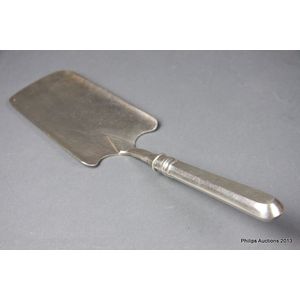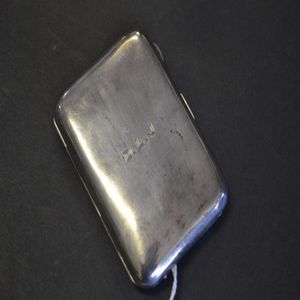1868 Russian Silver Cake Server with Foliage Decoration
You must be a subscriber, and be logged in to view price and dealer details.
Subscribe Now to view actual auction price for this item
When you subscribe, you have the option of setting the currency in which to display prices to $Au, $US, $NZ or Stg.
- Engine Turned - Engine turning is a decorative technique used on metal surfaces to create intricate curving or geometric pattern. The process involves cutting a series of lines into the surface of the metal using a rose engine or decoration lathe which rotates the metal as it cuts, allowing the operator to create a repeating pattern that covers the entire surface. The resulting surface has a shimmering, reflective quality that is often described as "engine turned." Where an engine turned item has been enamelled, the term used to describe the decoration is usually guilloche.
Engine turning was originally developed to decorate metal objects such as firearms, scientific instruments, and other metal objects that required precise and elegant design. - Assay / Assayed - Assaying is the testing of a metal, most commonly silver and gold to determine its ingredients and quality. In Britain, once an item of silver or gold has been assayed, a mark is stamped on it, certifying its purity. Known as hallmark, it derives its name from the Guild Hall of the Goldsmiths' Company, who recieved its Charter in 1327 giving it the power to assay and mark articles of gold and silver.
This item has been included into following indexes:
-
Russian
- precious objects 317
- silver items 287
Visually similar items

A Russian silver slice, Alexander Tillander, St Petersburg 1896, of plain trowel form with a rounded hexagonal handle, town stamp to edge of trowel with Zolotnik 84 and maker's mark to throat underside, silver weight 93gr. Length 22 cm

Sterling silver slice c.1844, Victorian fiddle pattern

Australian silver cigarette case, by Hardy Bros

Two Russian silver butter knives, hallmarked St Petersburg 1908-1926, 84 zolotniki
